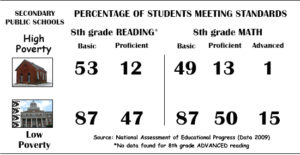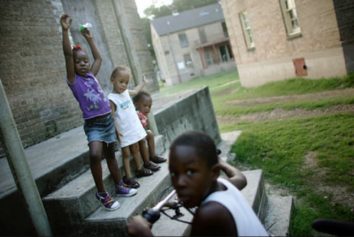A new study is shedding light on just how much classroom time students are missing out on at “high-poverty” schools due to insufficient resources and inadequate funding.
According to a study conducted by UCLA education professor John Rogers and postdoctoral scholar Nicole Mirra, students at “high-poverty” high schools are missing more than 22 days in the classroom due largely to teacher absences, emergency lockdowns and lack of facilities.
The study described any school where 75 percent or more of the student body received federal school lunch subsidies as “high-poverty.”
After taking a closer look at those schools, researchers determined that the type of “institutional challenges” that these schools faced were cheating students out of nearly a month of quality time in the classroom.
The study only confirms what many parents already assumed to be true.
Back in August, students, parents and activists at Thomas Jefferson High School in Los Angeles, which is considered “high-poverty” by the researchers, protested scheduling mistakes and errors in class assignments that ended up taking away valuable class time.
“The bottom line is that educators in many high-poverty schools do their work within a context of instability… created in part by poor school conditions,” Rogers told Al Jazeera. “For example, insufficient access to qualified teachers.”
Back in October the Los Angeles Unified School District board decided to spend more than $1 million to address the school’s issues with one of the solutions being an extension to the school day.
Other issues listed in the study include “unstable housing, hunger and lack of access to medical or dental care.”

Teachers at the “high-poverty” schools spent “substantially more time” offering social and emotional counseling to their students when compared to teachers at schools with more sufficient financial backing.
In addition to taking on the role of counselors, educators were also taking on janitorial and clerical tasks that amounted to an additional hour of work every week.
“Time is often being pulled in many different directions to try to achieve the goals schools have for their students,” Mirra said.
Rogers hopes that now the study will serve as hard evidence that something needs to be done to help students at these “high-poverty” high schools or else they will be facing serious educational disadvantages throughout their lives.
“Part of what we’re trying to do is make tangible that which is intangible,” Rogers explained. “To see the inequalities that are just beneath the surface… the only way to create truly equitable and excellent schools is to insure we have equity in our broader political economy.”
Rogers also touched on another political hot button – the idea of schools becoming more segregated now than they were in the past.
After analyzing the results of the study, Rogers said that he felt like schools have become “even more segregated” today based on class and race but by making vast improvements in “housing, health care and other policies that encourage class and race integrated communities” the cracks in the educational system can also be repaired.


